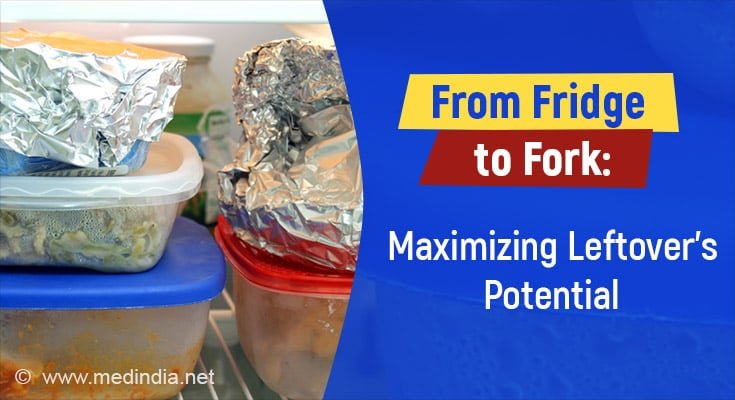Is That Leftover Safe to Eat? Know to Store, Reheat, and Savor Safely

- Learn the shelf life of common leftovers to avoid waste and ensure safety
- Proper storage, labeling, and thorough reheating are essential for minimizing the risk of foodborne illness
- By following guidelines for refrigeration, storage, and reheating, you can savor leftovers without compromising safety
Leftovers have long been a contentious topic in culinary circles and home kitchens alike. Some people swear by their convenience and cost-effectiveness, while others approach them with caution, concerned about their safety and potential for foodborne illness. So, are leftovers safe to eat, and if so, for how long?
Leftovers are essentially any uneaten food that remains after a meal. Whether it’s a half-eaten sandwich, last night’s dinner, or a slice of pizza, leftovers are a common occurrence in households worldwide. The safety of leftovers largely depends on how they are stored, handled, and reheated (1✔ ✔Trusted Source
Food Leftover Practices among Consumers in Selected Countries in Europe, South and North America
).
Advertisement
Factors Affecting Safety of Leftovers
Several factors influence the safety of leftovers:
1. Storage Temperature:
Proper refrigeration or freezing is crucial for preventing bacterial growth. Leftovers should be promptly refrigerated (within 2 hours of cooking) or frozen to minimize the risk of spoilage and foodborne illness.
2. Type of Food:
Some foods are more prone to spoilage than others. Perishable items such as meat, poultry, seafood, dairy products, and cooked vegetables are more susceptible to bacterial contamination and should be consumed or properly stored sooner.
3. Storage Containers:
Using airtight containers or wraps helps preserve the quality and safety of leftovers by preventing exposure to air and moisture, which can accelerate spoilage.
4. Reheating Methods:
Reheating leftovers to the proper temperature kills any bacteria that may have proliferated during storage. It’s essential to reheat leftovers thoroughly until they reach an internal temperature of 165°F (74°C) to ensure food safety.
Advertisement
Shelf Life of Leftovers:
While leftovers can be a convenient meal option, they don’t last indefinitely. Here’s a general guideline for the shelf life of common leftovers:
1. Meat, Poultry, and Seafood:
Cooked meats and poultry typically remain safe for consumption for 3-4 days when refrigerated at or below 40°F (4°C). Seafood leftovers should be consumed within 1-2 days for optimal safety and quality.
2. Dairy Products:
Leftover dairy-based dishes like soups, stews, and casseroles should be consumed within 3-4 days when refrigerated properly.
3. Cooked Vegetables:
Cooked vegetables can be safely stored in the refrigerator for 3-4 days but may lose texture and flavor over time.
4. Rice and Pasta:
Cooked rice and pasta should be consumed within 3-4 days when stored in the refrigerator. It’s important to reheat rice thoroughly to kill any bacteria, as it can be a common source of food poisoning if mishandled.
5. Pizza:
Leftover pizza can be refrigerated for 3-4 days or frozen for up to 1-2 months. When reheating pizza, it’s best to use an oven or toaster oven for optimal texture.
Advertisement
Tips for Safe Handling of Leftovers:
To minimize the risk of foodborne illness when consuming leftovers, follow these safety tips:
1. Prompt Refrigeration:
Refrigerate leftovers within 2 hours of cooking to prevent bacterial growth.
2. Proper Storage:
Store leftovers in shallow containers to facilitate rapid cooling and prevent the growth of harmful bacteria.
3. Labeling and Dating:
Clearly label leftovers with the date of preparation to track their shelf life and ensure timely consumption.
4. Thorough Reheating:
Reheat leftovers to an internal temperature of 165°F (74°C) using methods such as microwaving, oven baking, or stovetop reheating.
5. Avoid Cross-Contamination:
Keep raw and cooked foods separate to prevent cross-contamination, and use separate utensils and cutting boards for handling raw and cooked foods.
Leftovers can be a convenient and economical meal option, but their safety hinges on proper storage, handling, and reheating practices. By following guidelines for refrigeration, storage, and reheating, you can enjoy leftovers safely while minimizing the risk of foodborne illness. Remember to use your judgment and discard any leftovers that appear or smell off, as they may pose a health risk. With the right precautions, leftovers can be a delicious and safe addition to your meal repertoire.
Reference:
- Food Leftover Practices among Consumers in Selected Countries in Europe, South and North America – (https://www.ncbi.nlm.nih.gov/pmc/articles/PMC5302397/)
Source-Medindia
Source link
#Leftover #Safe #Eat #Store #Reheat #Savor #Safely



